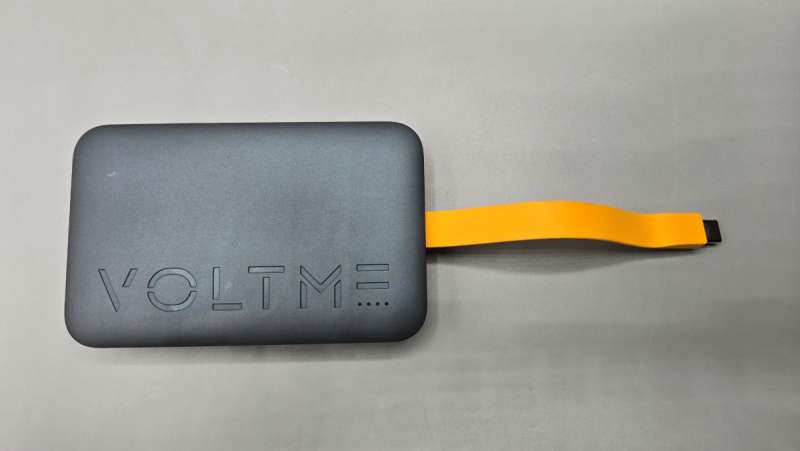
REVIEW – Summertime is travel time and that means I’ve got to keep my power banks handy. You never know what the power situation will be on a flight, and as a gadgeteer, I’ve got way too many things that need charging. Between the watch, the ring, the earbuds, the tablets and my phone, I’m almost constantly charging something en route. Thankfully, the folks at Voltme loaded me up with power banks. I’m going to discuss a couple of their products, but my main goal was to review their brand new Hypercore 20K power bank. It’s the smallest 20K battery I’ve ever seen!
⬇︎ Jump to summary (pros/cons)
Price: $29.99
Where to buy: Amazon
What is it?
The Voltme Hypercore is a slim 20,000mAh power bank with both a USB-A and USB-C port.
What’s included?
- The power bank
- A 1 foot USB-C to C cable
- A user manual
Tech specs
- B3010
- V-Dynamic / Power Delivery / Quick Charge
- 1x USB-A, 1x USB-C
- Dimensions: 6.22 x 2.91 x 0.75 inches; Weight: 11.56 oz.
- 18 Months
Performance and features
The Voltme Hypercore 20K is quite compact for a 20K power bank and I think that is the primary feature that makes it stand out on the market. The Amazon photos make it seem slimmer than it is in real life, but when you see it in person, I think you would still be surprised. When I put it next to their 10k power bank, it’s just a little thicker, so it was just hard to believe that this bank actually was double the capacity. I should note that Voltme sent me several of their newer power banks to try, so I was able to make some comparisons that I’m not usually able to make.
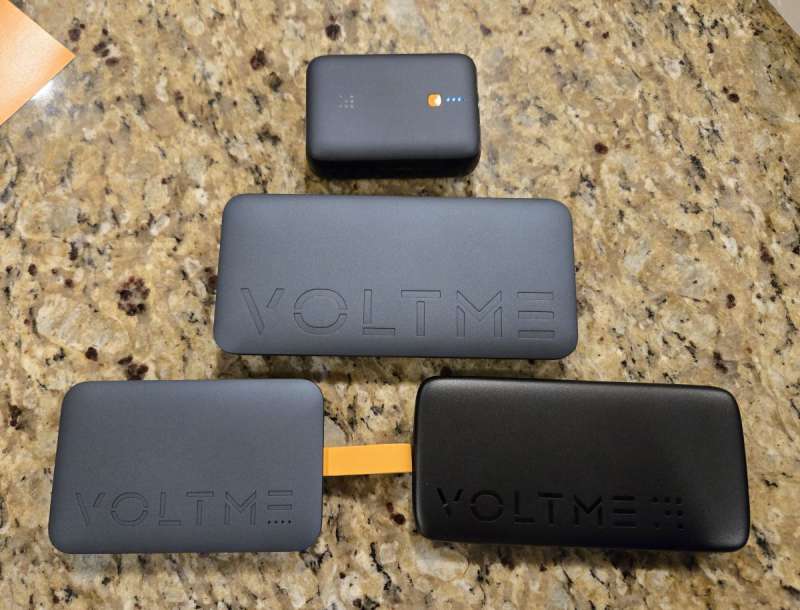
You can read on their website about how many times the Voltme Hypercore 20K will charge up your iPhone 16 (or equivalent sexy device) , but the fact is that it will charge up a whole bunch of things a whole bunch of times. The Voltme Hypercore 20K will also charge them quickly because the 22.5W fast charging output. You can charge two devices simultaneously, but the max output at that rate is lower (15W max). It will recharge at 18W and features lights on the side indicating approximately how much battery is left (4 lights at 100% down to 1 light at 25% or less).
The Voltme Hypercore 20K has several safety features such as short-circuit protection, over current and over voltage protection, as well as over-heating protection. That’s important to me because with the number of devices I have, it’s easy to lose track of whether I’m charging the bank with a power adapter that’s appropriate. I certainly don’t need to burn down the house because of one of my gadgets!
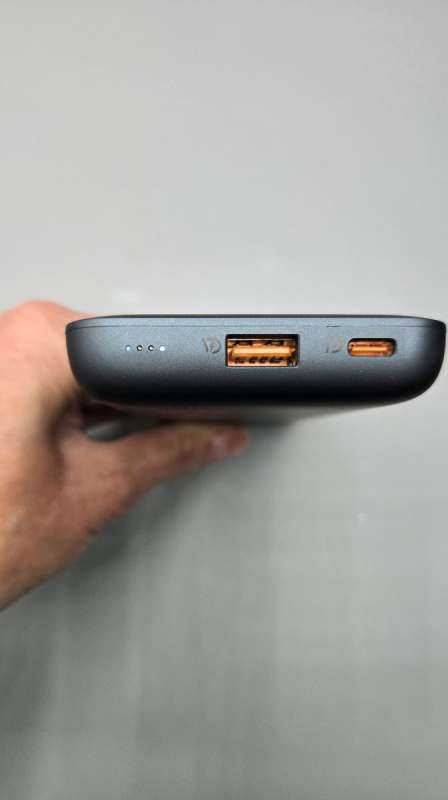
They make a big deal about how light the Voltme Hypercore 20K is. Let’s face it — it’s a battery, so it’s still heavy at almost 12 ounces. I can’t wait for someone to figure out how to make a light battery.
This is the Voltme Hypercore 10k sling. It has a built-in USB-C cable. I used this powerbank quite a bit around the house, but opted to use another Voltme powerbank, the Hypercore 10K Sling on my vacation (available here for $21.99 ) because it has a built-in cable that I found handy, plus it had a smaller form factor. Both batteries performed well, although I found that the housing they are in collected fingerprints and smudges. The gray blue pearlized finish is attractive and feels nice, though.
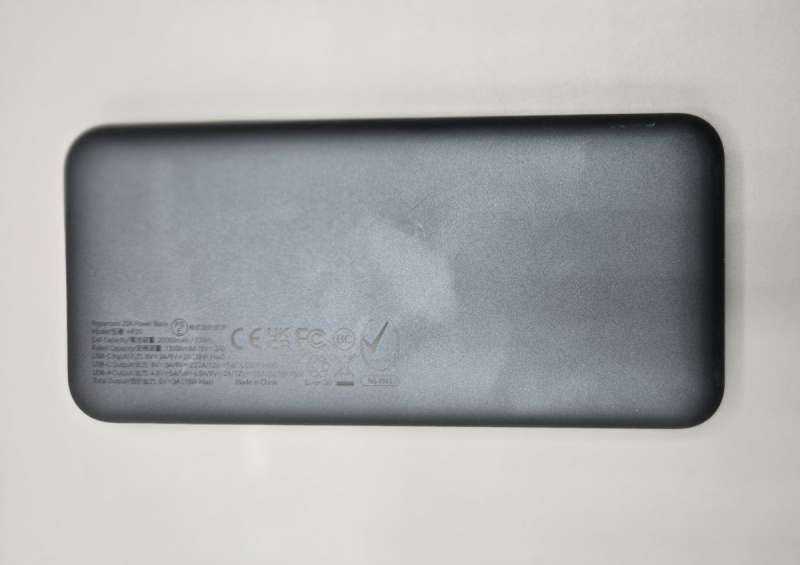
I tried something new when I was evaluating the Voltme Hypercore 20K because I have often lamented that there’s no real way to test battery capacity. I was grousing about that to my boyfriend who is an electrical engineer and he offered to make me a battery tester. Now, I’m no scientist. I’m a college professor in the liberal arts…so I don’t really know whether a battery labeled 20,000 mAh is supposed to really offer 20,000 mAh. However, there really should be a yardstick to measure these things, so I hooked up my Voltme Hypercore 20K fully charged to the tester. It should have powered the tester for 20 hours. It made it about 16.5 hours. For good measure, I also hooked up my favorite work powerbank, the Baseus Blade2, which is rated at 10k. It should have powered the gizmo for 10 hours. It made it about 5 hours. I also tested the Voltme Hypercore 10K sling, which should have also powered the tester for 10 hours. It made it for 8.5 hours. So are all the manufacturers lying about capacity? Maybe. Maybe my expectation of an actual 10k or 20k output is wrong — perhaps that is with optimal conditions, or maybe there’s a certain amount of power that is lost to the process. Again, I don’t know, but I do think there’s value to using some kind of measuring stick to evaluate these devices.
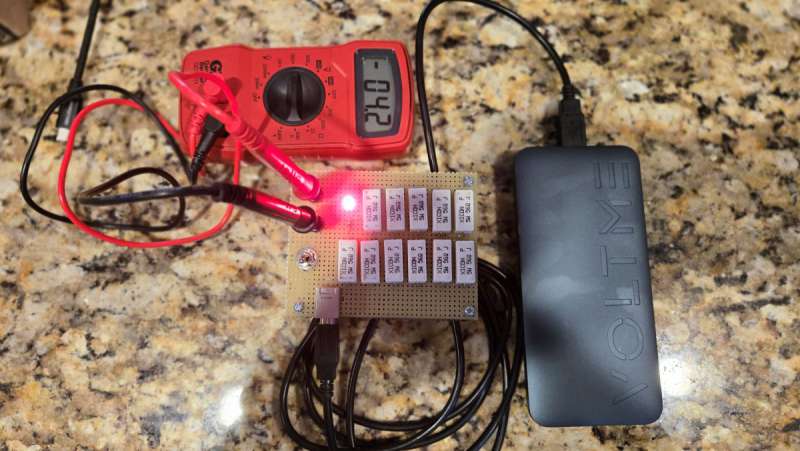
Final thoughts
Overall, I really liked the VOLTME Hypercore backup battery. It charges my devices quickly and it has a small form factor.
What I like about VOLTME Hypercore 20K power bank
- Quick charging
- Small for a 20k battery
- Has both USB-A and USB-C ports
What needs to be improved?
- The finish is nice to feel, but it does pick up fingerprints.
Price: $29.99
Where to buy: Amazon
Source: The sample of this product was provided for free by Voltme. Voltme did not have a final say on the review and did not preview the review before it was published.
Check out these other power bank reviews!
- Chargeasap Flash Pro Ultra power bank review – an all-in-one power delivery solution
- CUKTECH 30 40,000 mAh Power Bank and USB Hub review



Gadgeteer Comment Policy - Please read before commenting
20,000 mAh works out to be around 80 Wh of energy, which is approaching the TSA limit for air travel. I hear they are getting pretty strict about battery packs these days. I am also hearing that capacity e.g. 20,000 mAh is the total battery capacity assuming it discharged down to zero. But that would ruin a battery, so the circuitry cuts off well before the point of damage. That’s probably why you are getting fewer electrons than what the numbers are suggesting. At least now you have a guess as to how much they can really put out.
That is great info!